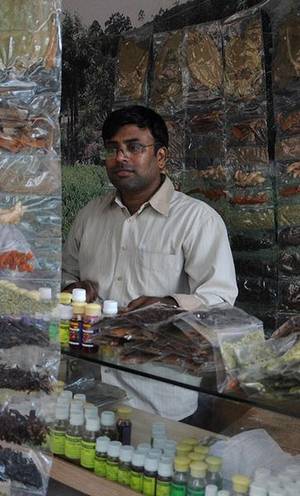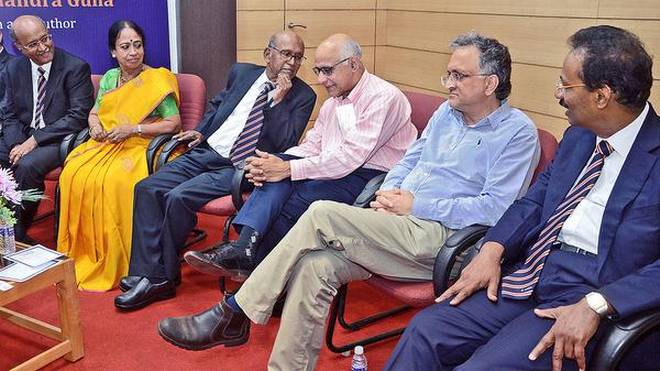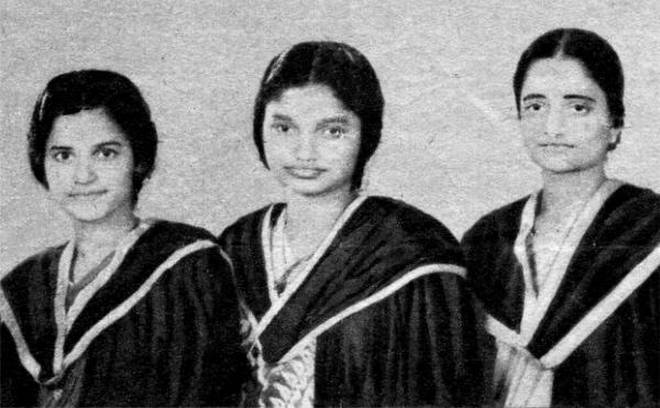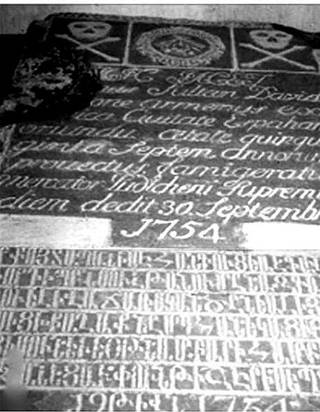India’s first woman electrical engineer
When Dr Shantha Mohan, who is writing a book on the women graduates of the College of Engineering, Guindy (CEG), contacted me recently, seeking more information on May George (Miscellany, February 3, 2014 ), I got more information from her than I could give. I’d always thought that the College had admitted only two women students, its first, in 1940, but I learnt from her that three had been admitted. They were PK Thresia, Leelamma George and A Lalitha, all receiving their degrees in 1943 with the certificate having ‘He’ struck out and replaced with a handwritten ‘She’.
A history of the College brought out by it in 1991 curiously states that the first women students were only two and one got her degree in Electrical Engineering, the other in Civil. Shantha Mohan provides me a wealth of detail about the Electrical Engineering student, Lalitha, so it must be presumed that the other two she mentions did Civil Engineering.
Lalitha, married at 15, was 18 when she had her daughter. A few months later, in 1937, her husband passed away. Determined not to stay at home and mourn or to remarry, she decided to take up a professional course. Lalitha applied to CEG in 1939, an all-male institution at the time.
It was her good fortune that her father, Pappu Subba Rao, was Professor of Electrical Engineering there and he persuaded Principal KC Chacko (the first Principal with a Doctorate) and Director of Public Instruction RM Statham, who was all for women’s education (Miscellany, August 24, 2015) that it was time the College admitted women students — and Lalitha became CEG’s first woman student, a widow and a mother at that. With the gates opened, Thresia and Leelamma followed her in. Lalitha stayed on a year after they left to get her Honours degree.
After a stint with the Central Standards Organisation in Simla, Lalitha spent a few years with her father, helping him with his research. He patented a Jelectromonium (an electrical musical instrument), smokeless ovens and an electric flame producer. But the need to make a living on her own beckoned, and she joined Associated Electrical Industries, a British firm.
She then began designing transmission lines, doing substation layouts and executing contracts. She was noteworthily associated with the work on electrical generators for the Bhakra Nangal Dam.
After 30 years with AEL, including the time after it had been taken over by General Electric, Lalitha retired, much of the last years of her working life focused on supervising contract projects. She was the only woman engineer from India to attend the First International Conference of Women Engineers and Scientists which was held in New York in 1964. Thereafter, she was active in international women’s engineering organisations internationally till she passed away in 1979.
She had once said, “Electrical Engineering runs in my blood. My father, four brothers, nephew and son-in-law are all Electrical Engineers.”
Shantha Mohan adds a request to all this information: “If you have information about women engineers from CEG from the 1940s to the 1960s, please let me know at shantha.rm@gmail.com.”
The Philippines connection
Many moons ago, on December 22, 2014, I had written about Tambaram railwayman Noel Fuller’s search for roots. At that time he had discovered that his great grandfather, Albert James Fuller of Madurai, had married Ellen Matilda Narcis, really a Narcisonian and an Armenian. Her line Noel traced back to Coja Sultan David who arrived in Madras from Isfahan in Persia around the 1720s.
Coja Sultan David became a leader of the Armenian community in Madras and his son, Aga Shawmier Sultan, was the owner of that ‘Great House in Charles Street’ in the Fort known as Admiralty, or Clive House. Noel’s search for his Armenian ancestors’ tombstones led him to that of the wife of Coja Sultan David which he found on St Thomas’ Mount. The Aga Shawmier Sultans, husband and wife, are buried in the yard of the Armenian Church in Madras, a church raised on the site of the Shawmier chapel which the family gifted to the community. All Noel could discover at that time was that Coja Sultan David had died in Pondicherry in 1754 and had converted to Roman Catholicism just before he passed away so that he could be buried in consecrated ground, the Armenians having no church of their own in Pondicherry.
Pondicherry yielded him no tombstones, but the information that after the English had taken the city in 1761 they had ravaged it, reducing even tombstones to rubble. The story then goes that in 1765, when the East Indiaman Earl Temple was to sail for Manila, it needed ballast and the rubble of Pondicherry was loaded on it. In the South China Sea, the ship hit a reef and sank. Salvagers in 1997 found in it, intact, the 1,335 kilogram tombstone of Coja Sultan David. There’s a missing link here, but the tombstone, its engraving still clear, is now in the Philippines, an exhibit in the Manila Museum.
Wrong again
My computer help once again sent out the wrong picture and, so, last week we had, with Subedar Subramanian, Brigadier K Sampath, one of the speakers, instead of the Subedar’s son Durailingam as mentioned. My apologies to Brig Sampath and Durailingam.
The chronicler of Madras that is Chennai tells stories of people, places, and events from the years gone by, and sometimes, from today.
source: http://www.thehindu.com / The Hindu / Home> Madras Miscellany> Society / by S. Muthiah / June 19th, 2017
New method to treat arrhythmia
Involves 3D electroanatomical mapping of the heart
For 10 years, 53-year-old Baaskaran Subramaniam suffered from palpitation and dizziness, which made him tense and angry. A family member said he had speech difficulty.
Mr. Baaskaran, a Malaysian resident, was suffering from arrhythmia, irregular rhythm of the heart. With no drugs yet to treat the condition, doctors rely on the conventional method of radiofrequency ablation.
Though accurate, the method exposes patients to irradiation.
Ulhas M. Pandurangi, chief of cardiac electrophysiology and pacing, arrhythmia-heart failure academy, Madras Medical Mission, opted for a new method of 3D electroanatomical mapping of the heart. The method dispensed with fleuroscopy and use of defibrillators.
“In the conventional radiofrequency ablation, we have to insert several catheters. It was like exploring inside the heart blindly. But the new method allows us to make just two incisions in the groin to insert two catheters. On contact, the image of the heart rhythm pattern is visible on the monitor and the physician can guide the catheter towards where the electrical impulse is created,” he explained.
“It is an experience to be able to go into the heart and find the exact place where the electric impulse is created,” he said. The Ensite Precision cardiac mapping system allows for a high level of automation, flexibility and precision that helps cardiologists to effectively diagnose a wide range of arrhythmias.
Dr. Pandurangi said the therapy is curative and the patient does not require medication post-procedure. It also reduces cost for the patient as using defibrillator could set back the patient by ₹7 lakh.
Mr. Baaskaran, who underwent the procedure two days ago, said the treatment cost of ₹4.8 lakh was covered by the insurance company in Malaysia.
During its meeting, the Tamil Nadu Electrophysiology Council had resolved that some of the therapies be covered under the Chief Minister’s Comprehensive Insurance Scheme, Dr. Pandurangi said.
source: http://www.thehindu.com / The Hindu / Home> News> States> Tamil Nadu / by Special Correspondent / Chennai – June 17th, 2017
Freedom fighter remembered
Tuticorin :
The 106th death anniversary of freedom fighter R Vanchinathan was observed at several places, including Vanchi Maniyachchi Maniyachchi Junction railway station and Kovilpatti in Tuticorin district, on Saturday.
The participants demanded the government to set up a memorial for Vanchinathan at Vanchi railway junction and also urged the rail department to erect Vanchi’s statue at the junction. It was at Vanchi Maniyachi junction where Vanchinathan shot dead the British government – appointed – Tirunelveli collector Robert William D’ Escourt Ashe dead, before killing himself on June 17, 1911.
Tuticorin collector N Venkatesh garlanded the photo of Vanchinathan at the railway station and paid homages to it. In his speech, the collector recalled the history of the freedom fighter Vanchi. Vanchi was born to forest officer Regupathi Iyer and Rukmaniammal at Sengottai in Tirunelveli. He joined the freedom movement after hearing public speeches of veteran freedom fighters V O Chidambaram and Subramania Siva, said the collector, while asking students to involve themselves in public life.
source: http://www.timesofindia.indiatimes.com / The Times of India / News> City News> Chennai News / June 18th, 2017
Forest department shop spices up Secretariat

New retail outlet sells forest produce sourced from Doddabetta
The Secretariat complex is more than just a cluster of government offices. The nearly 6,000 salaried staff who work there as well as the thousands who visit the offices make the complex a bazaar where a range of products — from vegetables through junk jewellery to snacks — can be bought.
Jostling for space at the Secretariat is a shop whose products are a heady mix — spices and medicinal oils. On a day when the demand for grants of the Tamil Nadu Forest Department was being debated at the Assembly, the department had opened a retail outlet selling produce sourced from the Medicinal Plant Development Area (MPDA) at Doddabetta.
The star attraction at the shop was a set of eleven varieties of spices, such as cloves, black pepper and star anise, packaged in sachets and priced at ₹ 160. “You can also buy them separately,” said S. Ashok, who runs the shop.
Variety of products
The shop also sells eucalyptus oil, lemon grass oil, camphor oil, citriodora oil, teatree oil and many others. The price of these concentrated oils is between ₹ 90 and ₹140 per 50 ml. “You can apply them directly or mix them with other oils,” added Mr. Ashok.
Making a strong pitch for the products, Mr. Ashok said the wintergreen oil that is sold in the shop can relieve arthritis. “If you cannot get relief from this oil, there is nothing else in the world that can cure your arthritis,” said Mr. Ashok. The Forest Department runs a similar outlet at Vandalur too.
source: http://www.thehindu.com / The Hindu / Home> News> States> Tamil Nadu / by B. Kolappan / Chennai – June 15th, 2017
15th
Total hip replacement surgery performed at Rajapalayam GH
A first of its kind at a taluk hospital, says Chief Medical Officer
Rajapalayam :
A total hip replacement surgery was performed on a 24-year-old youth, N. Saravanan of Avarampatti, at Rajapalayam Taluk Government Hospital on Thursday.
“This is the first time that a taluk hospital in the State has performed such an advanced surgery, with a costlier implant for the patient,” Chief Medical Officer N. Babuji said.
Mr. Saravanan developed septic arthritis, an infection in the bone, on his right hip joint three years back, and found it difficult to walk.
“When he came to us last month, we decided to conduct a total hip replacement, though we had not done it before at taluk hospitals,” Dr. Babuji said. The surgery was planned under Chief Minister’s Comprehensive Health Insurance Scheme.
“Under the scheme, the patient was eligible only for a cheaper prosthesis that is normally used on aged patients. However, considering the young age of the patient, who needed to have artificial joints of longer life, we went for a costlier prosthesis. The additional cost for the prosthesis was borne by Rajapalayam MLA Thangapandian,” Dr. Babuji said.
A team of medical officers, led by Dr. Babuji, two orthopaedic surgeons, Murali and Jagan, and two anaesthetists, Mariappan and Rajesh Khanna, performed the surgery that lasted for three hours. The patient would be back on his feet within 10 days, he added.
Such an advanced surgery was possible at the taluk-level hospital only because of the availability of two sophisticated equipment – C-arm and digital X-ray machine. “The equipment, each costing ₹10 lakh, were donated by former chairman of Ramco Group Ramasubrahmaneya Rajha two years back,” the CMO said.
Since then, the taluk hospital had been performing hemiarthroplasty surgeries on aged patients of osteoporosis as well as road accident victims. “We have been doing at least four such surgeries every month, thanks to the C-arm and digital X-ray machine,” Dr. Babuji said.
The State Government had proposed to set up a full-fledged orthopaedic ward at the taluk hospital soon. Funds to the tune of ₹1.5 crore for a CT-scan had already been sanctioned. Besides, ₹1.20 crore would be spent to establish a 10-bedded trauma ward, he added.
source: http://www.thehindu.com / The Hindu / Home> News> States> Tamil Nadu / by S Sundar / June 15th, 2017
13th
‘Institutions are built on ethics, integrity’

Ganga Medical Centre and Hospitals celebrates silver jubilee
Ethics and integrity must be the two important pillars on which good institutions are to be built, said Subroto Bagchi, Chairman of Odisha Skill Development Authority, at the silver jubilee celebrations of the Ganga Medical Centre and Hospitals Private Limited on Saturday.
Mr. Bagchi said that competence will alone not take an institution to greater heights if lacked integrity. Respect of law and the quality of fair judgment will help institutions to grow in the long run.
Speaking at the event, noted historian Ramachandra Guha said that institutions of quality and integrity are difficult to build.
“Ganga Hospital is the institution where I was restored, rehabilitated and which made my family happy,” said Mr. Guha, recalling his treatment at the hospital following an accident he met with at Kalhatti ghat road while travelling with family in April, 2012. Mr. Guha said that institutions and individuals must hold the theme of patriotism close to heart.
“Patriotism also involves loving and nurturing one’s city and State. The hospital has shown the same regional, state and national level,” he said.
Patient care
S. Rajasekaran, Clinical Director and Head of the Department of Orthopaedics of Ganga Hospital, said that the institution is committed to taking forward its excellence in patient care, research and academics.
S. Raja Sabapathy, chairman of the Department of Plastic, Hand and Reconstructive Microsurgery and Burns, Ganga Hospital and J. Dheenadayalan, senior consultant, Department of Orthopaedics, also spoke.
Founders of the hospital J.G. Shanmuganathan and his wife Kanakavalli Shanmuganathan were present at the function.
source: http://www.thehindu.com / The Hindu / Home> News> Cities> Coimbatore / by Staff Reporter / Coimbatore – June 11th, 2017

